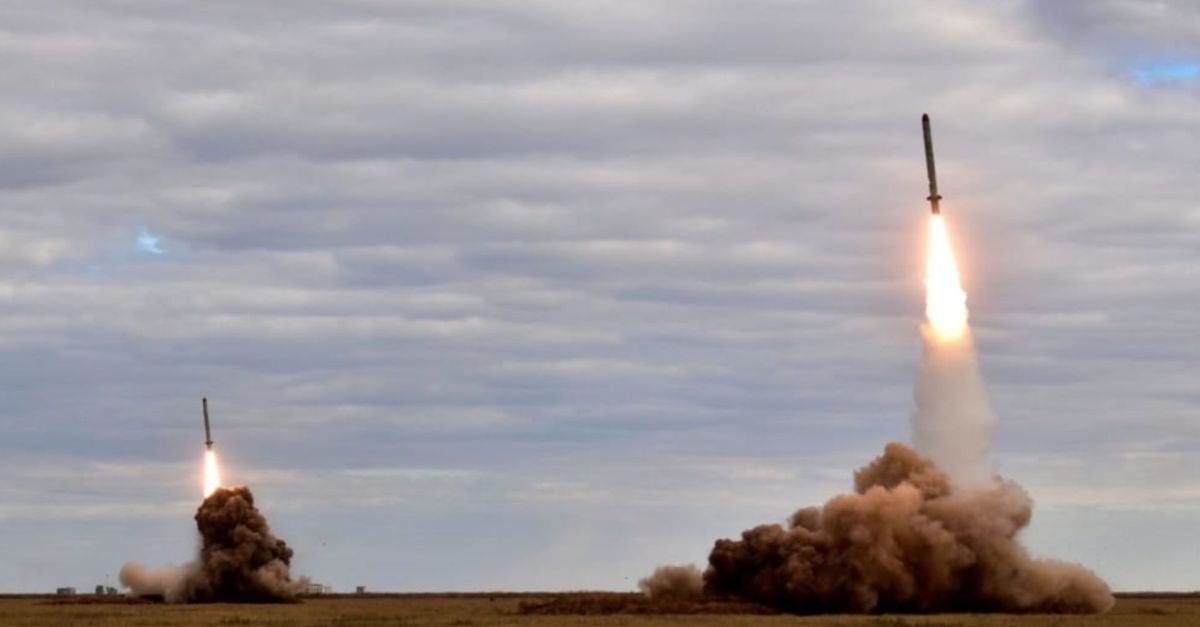Breaking News
Weapons Brief | Russian ISKANDER real threat to NATO bases.
The Russian 9K720 Iskander missile system, known as SS-26 Stone by NATO, has been a major concern for U.S. and NATO war planners since its development during the Cold War. Designed to counter Western air defense systems, the Iskander can launch conventional and nuclear strikes with high precision, thanks to advanced guidance systems, including Russian GLONASS GPS. The Iskander-M missile, with a range of up to 500 km, has been successfully used in conflicts such as the Syrian civil war and the war in Ukraine. Russia continues to modernize this formidable system, enhancing its accuracy, range, and speed, making it a crucial element of Russian military strategy. Russian missile capabilities have been a challenge for U.S. and NATO war planners even before the collapse of the Soviet Union.
Follow Army Recognition on Google News at this link

Iskander system firing 9M728 cruise missiles, 2016(Picture source: Russian MoD)
The Russian Iskander missile: a Cold War legacy that still haunts NATO
The Iskander 9K720 missile (NATO designation SS-26 Stone) is one of Russia's most advanced short-range mobile ballistic missile programs.
The Russians have unabashedly spread this capability worldwide. Now that the war in Ukraine has entered its third year, Putin's regime claims it will continue to distribute such weapons to countries the United States considers threatening, like the Islamic Republic of Iran.
The story of Iskander
The story of Iskander begins in the last decade of the Cold War, in the 1980s. At the time, the Soviets were doing everything in their power to keep up with the frenzy of U.S. military spending and innovation under President Ronald Reagan. Iskander was designed in response to rapid developments in Western air defense systems.
The Iskander missile can conduct conventional strikes as well as nuclear attacks. It is therefore used for strategic deterrence purposes and operational purposes at the non-strategic level.
Comprising two versions, the Iskander-M has a range of up to 500 km. As mentioned earlier, the Russians have multiplied this system over the years. The export model is the Iskander-E. While still a powerful system, it has a reduced range. The Iskander-M and Iskander-E are very precise systems.
The Iskander is equipped with a solid propellant single-stage engine, and the missile is also capable of reaching hypersonic speeds once it enters the atmosphere, during its terminal phase. When systems become hypersonic, they can be difficult to defend against.
In February, it was reported that Russia was rapidly upgrading its Iskander and Kinzhal systems to improve their precision, range, and speed.
In other words, Moscow was investing to make one of its deadliest strike weapons even deadlier.
Iskander missiles use advanced guidance systems for extremely precise targeting. These guidance systems include an inertial navigation capability. The Iskander is equipped with optical systems and can use satellite-assisted guidance.

Iskander-M missile being installed on the 9P78-1 transporter erector launcher, somewhere in russia test field (Picture Source : TASS)
Iskander and GLONASS system
Iskander would be put to the ultimate test in Ukraine.
According to Thomas Newdick, the Iskander-M systems deployed in Ukraine "used a seemingly unprecedented decoy to fool Ukrainian air defenses." By employing "penetration aid devices" or PENAIDs, which are normally associated with longer-range weapons, the Russians ensure that "their short-range ballistic missiles on the battlefield are also better able to defeat increasingly sophisticated ballistic missile defense (BMD) systems" that Ukraine deploys against Russia.
Moreover, the Russians have moved these systems to their enclave of Kaliningrad, in the Baltic Sea, located between Germany and Poland. Their deployment in this region not only reinforces what is otherwise a strategically vulnerable territory for Russia in Europe but also sends a clear signal to European powers about the type of damage Russia could inflict if the war in Ukraine became uncontrollable.
The Iskander missile is one of Russia's most powerful weapons. Originally created to respond to the West during the Cold War, it continues to serve the Russian military with a high success rate, so much so that Moscow has authorized a massive upgrade. Western leaders should not underestimate this system.


























